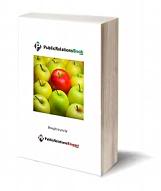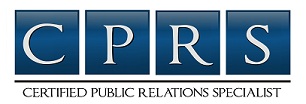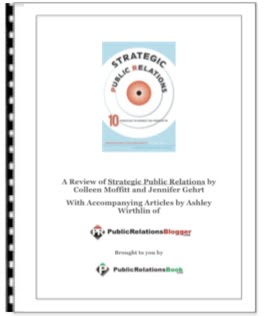________________________________________________________________________

Tips on Using Media and Public Relations as an Effective Marketing Tool
________________________________________

Lights...camera...ACTION.
That's what often happens when people think of using media for advertising or other promotional purposes. It's the focus on 'action' that often means the results are somewhat less than expected. A bit of planning can greatly improve your chances of success.
Before you contact any media outlet there are a few things you should think about:
1) Choose the right media.
2) Make sure you have an interesting story (or advertisement).
3) Treat media contacts with respect.
Here's some advice to help you use media wisely and improve your results.
1) Choose the right media.
>> Press (newspapers - daily, weekly, paid or free) -
* Great for targeting 'now' buyers who are looking for current specials and promotions.
* Generally reaches an older demographic.
>> Television (metropolitan or regional) -
* Huge reach potential ensures many people have the opportunity to see your advertisement. Although often there is much wastage as many viewers are not in the target audience.
* Combination of visual & audio is ideal for 'show and tell' demonstrations.
* Issues will be more likely to be covered if they can be explained or highlighted with the use of 'visuals' - live footage, photos, pictures, interviews etc.
>> Radio -
* Due to the diversity of radio station music/talk formats you can more easily identify demographics of audience.
* Higher frequency can be achieved due to relatively low cost of medium.
* May add credibility to small firms as audio presentation can be professionally produced at a low cost.
>> Direct Mail -
* Can create high impact material with detailed information.
* Ability to target individual users and personalize message.
* Responses can be easily tracked and measured.
>> Email -
* Very short lead/production time. May use text, HTML, rich media format.
* Can easily be personalised using in-house information.
* Ideal to attract customers back to a web site for additional details and ordering.
* Quick response and feedback possible.
>> Catalogues/Flyers -
* There are many types of catalogues. Choose a style and frequency to suit your product, audience and budget - e.g. paper stock, use of colour, photographic style, layout, topic etc.
* Can promote a range of complementary products in a themed environment.
2) Make sure you have an interesting story (or advertisement). If you are creating an advertisement consider these points:
- - Do you have a headline that is benefit oriented?
- - Do you quickly spell out the benefits in the first few lines of copy?
- - Are all contact details legible and correct?
- - Use a picture to add interest.
- - Can you use colour?
- - Your company logo should appear at the bottom of the ad, not the top.
- - Where is your ad going to appear in the publication:
* Which issue?
* Which page? Left or right hand side?
* Is there an associated feature/editorial opportunity?
* Where are your competitors positioned?
If you are submitting a media release or contacting a journalist/reporter for coverage:
- - Make sure you have covered the 5 W's:
* Who, What, Where, When, Why.
- - Have your contact details at the bottom of the release.
- - Make sure you have a credible 'news' angle. Use numbers, trends, emotional situations, quotes from people involved etc to add interest for a reporter.
- - Write concisely without using industry jargon. The release should be 400-500 words maximum.
- - Try and send your release to a specific individual, reporter or journalist.
3) Treat media contacts with respect.
Most people in the media work to revolving deadlines. Make life a bit easier for your media contact by working within these deadlines, and in return you will usually receive a fair hearing.
Reporters try to maintain an objective approach to stories. You may think your new product release or upcoming event is hugely important. But don't imagine the media will always see it your way. Give them a reason to get excited but stick to the facts.
If you are seen to be too pushy your story will often be ignored. Don't harass the reporter with numerous phone calls, emails, faxes etc. It is OK to call the reporter first and check their beat and ask how and when they prefer information to be supplied. For example, many newsrooms will not accept emails with attachments due to virus concerns. Then send your (properly prepared) information, and wait for them to contact you.
In summary, to get the best results:
* Choose the right media
* Write your material to be effective
* Contact the right person, and
* Submit your information in an appropriate way.
Oh...and don't forget,
Lights...camera...ACTION - using the media should be fun.
(c) 2005 Marketing Nous Pty Ltd
Stuart Ayling runs Marketing Nous, an Australasian marketing consultancy that specialises in marketing for service businesses. He helps clients to improve their marketing tactics, attract more clients, and increase revenue. Stuart also offers telephone consultations and runs regular marketing seminars. For additional marketing resources, including Stuart's popular monthly newsletter, visit his web site.
Article Source.
Tags: media, public relations, tools, business advantages, PR
That's what often happens when people think of using media for advertising or other promotional purposes. It's the focus on 'action' that often means the results are somewhat less than expected. A bit of planning can greatly improve your chances of success.
Before you contact any media outlet there are a few things you should think about:
1) Choose the right media.
2) Make sure you have an interesting story (or advertisement).
3) Treat media contacts with respect.
Here's some advice to help you use media wisely and improve your results.
1) Choose the right media.
>> Press (newspapers - daily, weekly, paid or free) -
* Great for targeting 'now' buyers who are looking for current specials and promotions.
* Generally reaches an older demographic.
>> Television (metropolitan or regional) -
* Huge reach potential ensures many people have the opportunity to see your advertisement. Although often there is much wastage as many viewers are not in the target audience.
* Combination of visual & audio is ideal for 'show and tell' demonstrations.
* Issues will be more likely to be covered if they can be explained or highlighted with the use of 'visuals' - live footage, photos, pictures, interviews etc.
>> Radio -
* Due to the diversity of radio station music/talk formats you can more easily identify demographics of audience.
* Higher frequency can be achieved due to relatively low cost of medium.
* May add credibility to small firms as audio presentation can be professionally produced at a low cost.
>> Direct Mail -
* Can create high impact material with detailed information.
* Ability to target individual users and personalize message.
* Responses can be easily tracked and measured.
>> Email -
* Very short lead/production time. May use text, HTML, rich media format.
* Can easily be personalised using in-house information.
* Ideal to attract customers back to a web site for additional details and ordering.
* Quick response and feedback possible.
>> Catalogues/Flyers -
* There are many types of catalogues. Choose a style and frequency to suit your product, audience and budget - e.g. paper stock, use of colour, photographic style, layout, topic etc.
* Can promote a range of complementary products in a themed environment.
2) Make sure you have an interesting story (or advertisement). If you are creating an advertisement consider these points:
- - Do you have a headline that is benefit oriented?
- - Do you quickly spell out the benefits in the first few lines of copy?
- - Are all contact details legible and correct?
- - Use a picture to add interest.
- - Can you use colour?
- - Your company logo should appear at the bottom of the ad, not the top.
- - Where is your ad going to appear in the publication:
* Which issue?
* Which page? Left or right hand side?
* Is there an associated feature/editorial opportunity?
* Where are your competitors positioned?
If you are submitting a media release or contacting a journalist/reporter for coverage:
- - Make sure you have covered the 5 W's:
* Who, What, Where, When, Why.
- - Have your contact details at the bottom of the release.
- - Make sure you have a credible 'news' angle. Use numbers, trends, emotional situations, quotes from people involved etc to add interest for a reporter.
- - Write concisely without using industry jargon. The release should be 400-500 words maximum.
- - Try and send your release to a specific individual, reporter or journalist.
3) Treat media contacts with respect.
Most people in the media work to revolving deadlines. Make life a bit easier for your media contact by working within these deadlines, and in return you will usually receive a fair hearing.
Reporters try to maintain an objective approach to stories. You may think your new product release or upcoming event is hugely important. But don't imagine the media will always see it your way. Give them a reason to get excited but stick to the facts.
If you are seen to be too pushy your story will often be ignored. Don't harass the reporter with numerous phone calls, emails, faxes etc. It is OK to call the reporter first and check their beat and ask how and when they prefer information to be supplied. For example, many newsrooms will not accept emails with attachments due to virus concerns. Then send your (properly prepared) information, and wait for them to contact you.
In summary, to get the best results:
* Choose the right media
* Write your material to be effective
* Contact the right person, and
* Submit your information in an appropriate way.
Oh...and don't forget,
Lights...camera...ACTION - using the media should be fun.
(c) 2005 Marketing Nous Pty Ltd
Stuart Ayling runs Marketing Nous, an Australasian marketing consultancy that specialises in marketing for service businesses. He helps clients to improve their marketing tactics, attract more clients, and increase revenue. Stuart also offers telephone consultations and runs regular marketing seminars. For additional marketing resources, including Stuart's popular monthly newsletter, visit his web site.
Article Source.
Tags: media, public relations, tools, business advantages, PR
Popular choices
- Non Gamstop Casino
- Mejores Salas De Póker
- Non Gamstop Casinos
- Siti Casino Online Non Aams
- Migliori Siti Casino Online
- UK Online Casinos Not On Gamstop
- Non Gamstop Casino Sites UK
- Non Gamstop Casino Sites UK
- UK Casino Not On Gamstop
- Casinos Not On Gamstop
- Online Casino
- オンラインカジノ
- UK Casino Not On Gamstop
- UK Casino Not On Gamstop
- Reputable Non Gamstop Casinos
- Casinos Not On Gamstop
- Best Non Gamstop Casinos
- Non Gamstop Casino
- Casinos Not On Gamstop
- Slots Not On Gamstop
- Non Gamstop Casino
Subscribe to:
Post Comments (Atom)






Comments (0)
Post a Comment